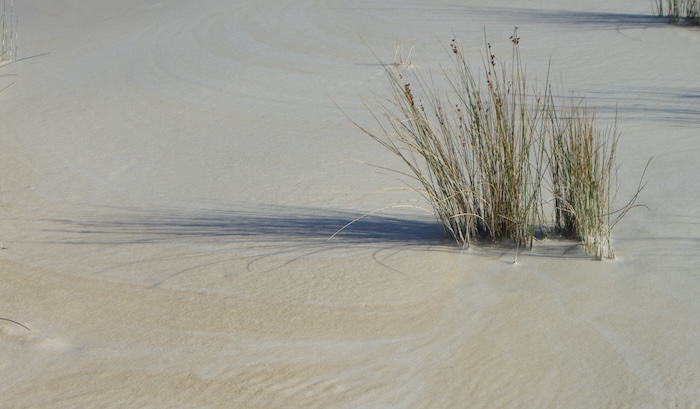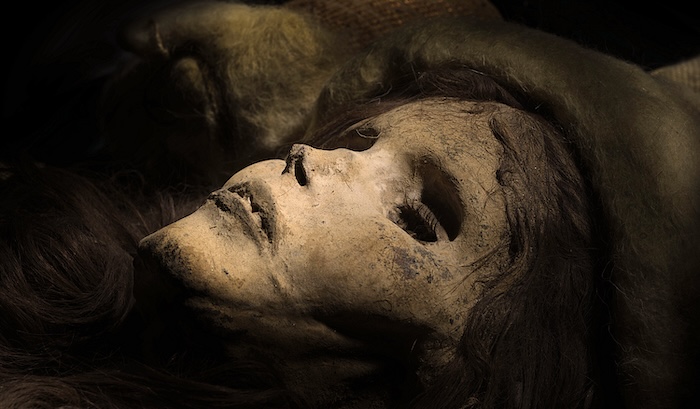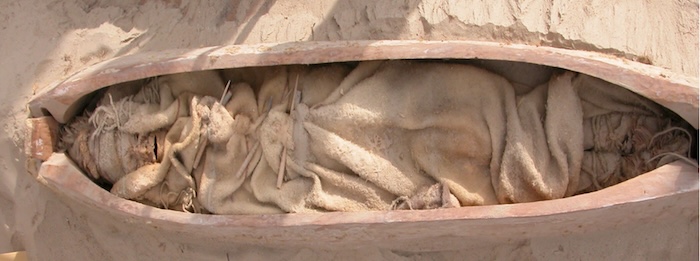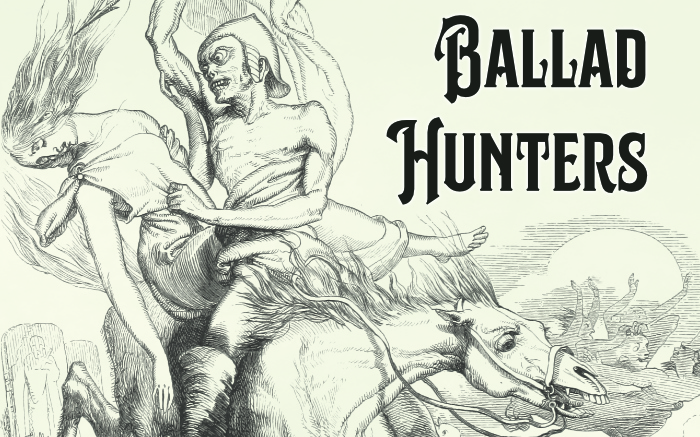Lop Nor was a salt lake in the Taklamakan Desert in remote western China. The lake no longer exists; damming the Tarim River to create an agricultural reservoir doomed it. But while Lop Nor existed, it was a terrible puzzle, because every time outsiders visited the lake it seemed to be in a different place. The “wandering lake” and all the cool stuff around it makes a great RPG adventure site!
tw: pictures of mummified faces
This post is brought to you by beloved Patreon backer Colin Wixted. Thanks for helping keep the lights on! If you want to help keep this blog going alongside Colin, head over to the Patreon page – and thank you!

The Taklamakan Desert is a frigid sandy waste in China’s Xinjiang Province. A complex of rivers runs through the desert, fed by snowmelt from the mountains. This river system does not reach the sea. Historically, it just petered out in the wastes, evaporating away and sinking into the sand. As it petered, it fanned out into a delta, breaking down into a web of distributaries: the opposite of tributaries. Some distributaries gradually vanished, and others emptied into terminal lakes, where water flowed in but never flowed out. These lakes would grow salty. River water carries a small amount of salt, and when a lake is being drained by evaporation instead of an outflow, the salt just accumulates in place. When the lakes vanished, the salt stayed behind. 35% of the surface of the Lop Desert (around where Lop Nor used to be) is salt crust and salty soil, and the salt crust is a foot and a half thick in some places.
This whole system was highly unstable. Rivers naturally meander, carving themselves new channels, jumping their banks, and going new places. The flatter it is, the more they meander. The Tarim Basin is very flat. That means the rivers within it were forever finding new directions to go, merging with other rivers, then years later splitting back apart. All this meant the water would wind up in different places, year to year. And even if the same terminal delta is getting the water, it’s a normal feature of deltas that they constantly change which channel of the delta is the main one. Channels fill with silt, others carve themselves new depths, and—again—the water winds up in different terminal lakes. It’s not unreasonable to look at this as some lakes drying up and new lakes forming. But if you only visit Lop Nor every few years, it sure does look like the big salt lake has just… moved.

Lop Nor’s human history reflects the history of the lake. Mummies found carefully buried in the salty soil date back as far as 4,000 years. Some really cool archaeological and genetic evidence indicates these people were herders who followed the shifting rivers and were genetically isolated, interacting little with the outside world. From (very roughly) 100 B.C. to 330 A.D., Lop Nor stayed in the same place. The stable rivers supported agriculture and a kingdom and city called Loulan. Loulan controlled the oases along one of the major trade routes between China and the outside world. When Lop Nor started moving again, it meant the rivers could no longer be relied on to stay still and water the crops. The city of Loulan was abandoned in 330 A.D.
Lop Nor continued wandering for the next 1600 years. This is reflected in historical Chinese documents, which keep putting the lake in different places. Though the city of Loulan was now empty ruins, the area around Lop Nor continued to be inhabited, though never densely. In 1876, the Russian geographer Nikolay Przhevalsky visited Lop Nor. He reported the ruins of a city two miles in circumference, and that nearby Uyghurs he spoke to knew nothing about the people who built the ruins. He wrote that the lake was, at that time, more of a salt marsh. A few people lived in it, building houses of reeds in the dryer parts of the marsh and laying reeds atop the damp earth to provide places to stand. The edges of the marsh were salty, but the center was fresh. Adding to the confusion over location, Przhevalsky visited a shallow freshwater lake upstream of Lop Nor that would crawl over its banks and inundate a surrounding marsh when the wind blew from the right direction. Because Przhevalsky found Lop Nor in a different place than the historical Chinese records suggested, he concluded that the records were just wrong. It would be decades before outside geographers hypothesized that Lop Nor moved.

Image credit: Michael Kan. Released under a CC BY 2.0 DEED license.
Przhevalsky also reported that in 1862, 160 Russians from the Old Believer sect tried to settle near Lop Nor. The Old Believers are a (still extent) religion that practice a form of the Russian Orthodox faith predating the reforms of Peter the Great in the 1600s. The group that traveled to Lop Nor were from a now-extinct sub-sect called the Wanderers who believed that Peter the Great was the antichrist, and wandered the fringes of the Russian world searching for the Oponskoye Kingdom, a promised land that they believed was a literal place that could be found and settled in, but has since faded into Russian folklore. In the spring of 1863, the Wanderer community moved on, supplied with food and horses by the Chinese governor of Turfan. Clearly the salt flats, mummies, and ruined city of Loulan were not a literal paradise on earth.
Water was, unsurprisingly, the biggest complication for outsiders visiting Lop Nor and the Loulan ruins. When Swedish geographer Sven Hedin visited in 1895, he hired a local guide who claimed he knew how to reach rivers and water along the way to Loulan. But the rivers had moved (or else the guide was lying), and Hedin ran out of water. Someone in the party (Hedin blamed the guide) was also drinking stealthily from the water reserves, so the expedition had less water than Hedin thought. Most of the expedition perished. In 1906, Hungarian-British archaeologist Aurel Stein, with better guides, hopped along oases all the way to Lop Nor. He then departed the salt lake for the Loulan ruins in December, when he was able to resupply his fresh water by chopping ice off the surface of the lake. Water pushes out salt as it freezes, so ice from a salt lake is still freshwater.
In 1972, China dammed the Tarim River to create the Daxihaizi Reservoir. The whole river has since dried up downstream. The salt flats where Lop Nor once meandered are now being mined for metal salts, and there are persistent reports that such mines use Uyghur political prisoners as slave labor.

Image credit: Baomi. Released under a CC BY-SA 4.0 DEED license.
In a fictional adventure site based on Lop Nor, the adventure hook that jumps out at me is being sent to investigate the disappearance of an expedition that departed for the ruins a few years ago, but never returned. The previous expedition was confident there was a salt lake near the ruins. They timed their departure so they’d arrive in winter and drink from the ice on the salt lake. To their horror, when they arrived, the lake was gone! Their bodies still lie in the ruins, only partially mummified. This sets them apart from the ancient (and intentional) mummies in the graveyard, which were treated to speed mummification, then buried in the saltiest soil.
When the party arrives at the ruins (presumably also in winter), the lake is right where it’s supposed to be. The characters find the partially-mummified bodies of their predecessors, clearly dead from thirst, which makes no sense, given all the ice that’s right over there. Meanwhile, you’re in this remote place where few people live anymore, set against the ruins of when the land was fertile, in the midst of a frozen hell. In a magical setting, you also have to fight mummies in the ruins and salt monsters in the lake.
There are three ways the characters can solve this mystery. If they go explore the lake, they’ll find the river feeding it has other channels. Some of these channels are marked by dead trees, but in some the trees are still alive. The river must have changed course only recently. The second option is exploring the ruins. The written records of this culture have been preserved by the dry air like at Dunhuang (see my post from 2018, behind a paywall). The documents describe the downfall of this kingdom when the lake wandered off. The third option is finding the few shepherds who live out here. All three options also involve fighting (or avoiding) mummies and salt monsters.
In a setting where lithium (or some other salt component or byproduct) is valuable, a salt flat where the wandering lake once wandered to may host a clandestine mining operation, and the party may consider helping in a slave revolt.

Make sure you don’t miss a blog post by subscribing to my no-frills, every-other-week mailing list! I also have a signup that’s only for big product releases!
Looking for material for your game tonight? My back catalog has hundreds of great posts, all searchable and filterable so you can find something from real history or folklore that fits exactly what you need! Posts older than a year are behind a very cheap paywall – only $2/month!
Come follow and chat with me on social media! On Mastodon I’m @MoltenSulfur@dice.camp. On Twitter, I’m @moltensulfur. On Blue Sky, I’m @moltensulfur.bsky.social.
Enjoy this post? Consider sharing it on social media, or maybe emailing it to a GM friend of yours. The social media infrastructure that creators relied upon to grow their audiences is collapsing. You sharing my stuff helps me stay relevant and ultimately helps me get paid for my time.
Sing and fight magical folk ballads in 1813 England and Scotland! This free early-access edition has everything you need to play a Ballad Hunters one-shot about the traditional song Barbara Allen.
The game has:
– Investigative adventures centered around the lyrics of traditional British ballads
– Simple, story-driven rules inspired by the GUMSHOE engine
– A historical setting that is grim but hopeful
– Magic where characters make ballad verses come to life
Ballad Hunters is the sequel to Shanty Hunters, winner of a 2022 Ennie Award (Judge’s Choice) and nominee at the Indie Groundbreaker Awards for Most Innovative and Game of the Year.
You can download the free early-access version of the game from DriveThruRPG or Google Drive.
Sources
From Kulja to Lob-Nor by Nikolay Przhevalsky (1879)
Evolution of the Lop Desert and the Lop Nor by Zhao Songqiao and Xia Xuncheng in The Geographical Journal (1984)
The Mummies of Ürümchi by E.J.W. Barber (2000)
The genomic origins of the Bronze Age Tarim Basin mummies by Fan Zhang et al. in the journal Nature (2021)







